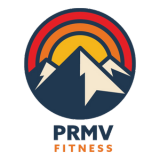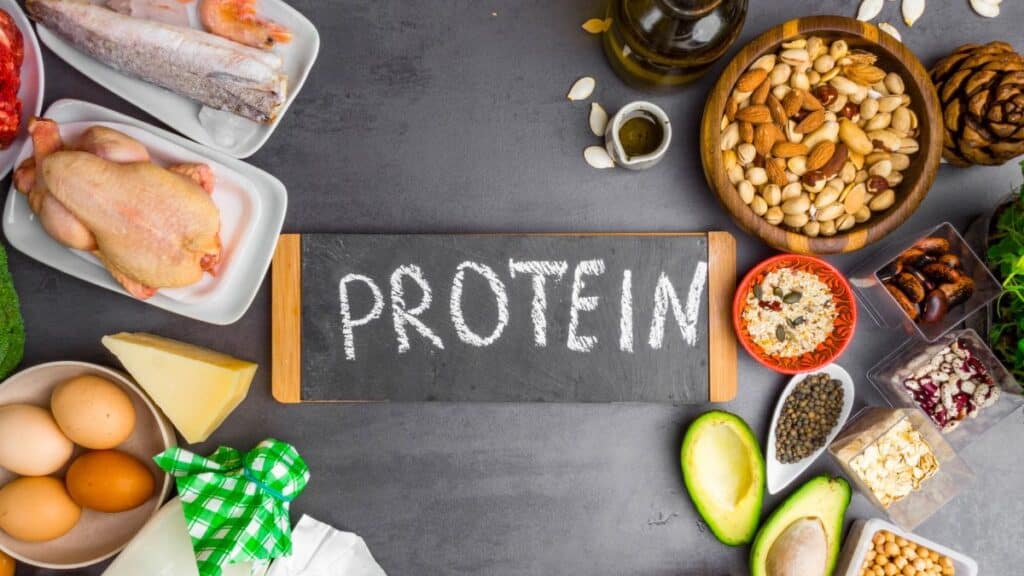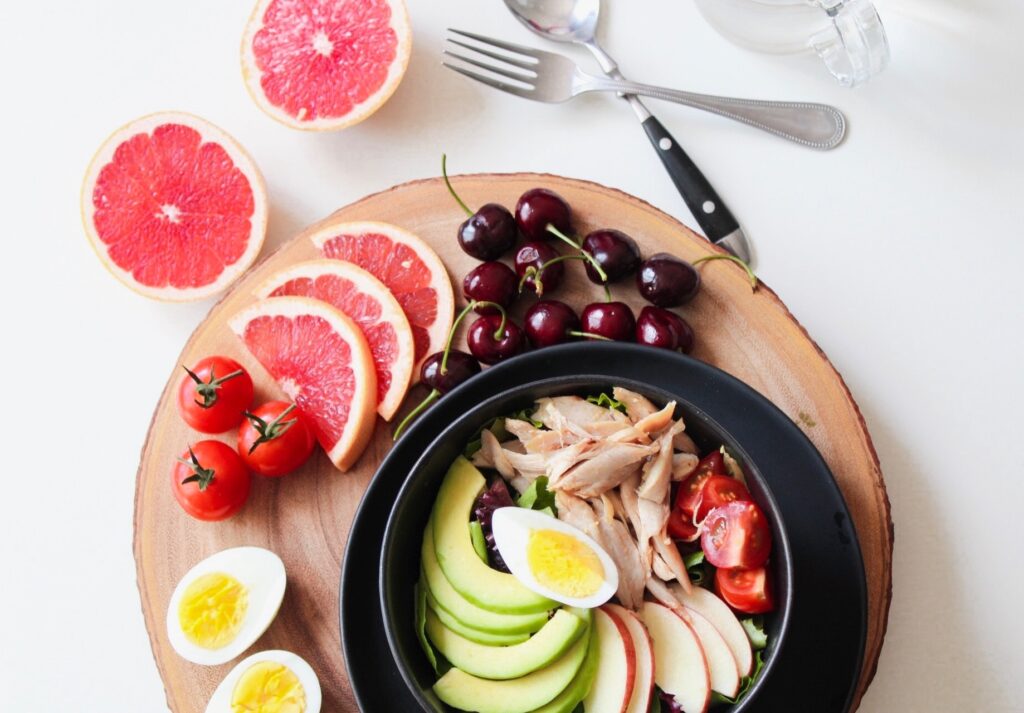As a functional fitness coach devoted to helping my clients achieve high levels of health and performance, I'm always eager to expand my knowledge. So when I discovered sports scientist Dr. Don Layman's interview on decoding optimal protein intake, I knew I had to soak up his wisdom. With over 40 years researching protein metabolism, Dr. Layman drops some serious knowledge bombs that every performance and longevity-minded coach needs to know.
After reviewing the research and recommendations from this protein expert, I'm convinced proper protein intake provides a clear performance edge. However, optimizing protein is a nuanced endeavor requiring an individualized approach. Here are my key takeaways on how to leverage protein for kickass fitness:
Muscle Rules
Dr. Layman breaks it down: the health of two tissues determines longevity and function - muscle and brain. As coaches, if we can keep clients' muscles and neurological systems in tip-top shape, everything else tends to fall into place.
I've seen the benefits of muscle-centric training firsthand, as prioritizing strength and metabolic conditioning transforms bodies, performance and lives. Supporting lean mass improves insulin sensitivity, blood glucose regulation, mitochondrial function, hormone balance, body composition, movement longevity, injury resilience and more.
Skeletal muscle comprises up to 50% of total body mass and plays key roles in mobility, metabolism and supporting organic health. However, our precious metabolic engines face constant threats...
Protecting Muscle as We Age
After peaking around age 25, muscle mass and quality begins to decline. Annual losses accelerate after 50, approaching 1-2% per year. This leads to impaired strength, function and metabolic health.
Progressive overload through strength training can absolutely help offset losses. However, aging also impairs our ability to synthesize new muscle protein even when training hard.
According to Dr. Layman, the efficiency of protein utilization decreases as we get older. To achieve the same muscle protein synthesis (MPS) as a younger person, mature clients need higher protein intake along with resistance exercise.
Guarding Against Muscle Loss During Weight Loss
The other prime threat to precious metabolic tissue? Dieting, especially extreme deficits. Significant calorie restriction ramps up catabolism, breaking down structural proteins for energy.
This leads to the all-too-common phenomenon of losing weight, but with significant lean tissue loss. The end result is a smaller, but softer, metabolically challenged physique.
However, Dr. Layman's research confirms that strategic protein intake while cutting calories enhances fat loss while preventing muscle catabolism.
Rethinking Protein Needs
Here's a truth bomb coaches need to recognize - standard protein recommended dietary allowance (RDAs) are likely way too low for active, athletic clients wanting to build strength and lean mass.
Problems with RDAs
The classic nitrogen balance technique used to determine RDAs has flaws when applied to adults. It likely underestimates true protein needs for optimal MPS.
Nitrogen balance measures:
- Nitrogen intake from protein foods (incomplete)
- Nitrogen losses from urine, stool, sweat, etc. (inaccurate)
Net nitrogen retention is used to estimate "protein requirement" but fails to capture the whole picture.
Essential Amino Acids Are King
We don't have a generic protein requirement per se. Rather, our need comes down to adequate intake of all nine indispensable amino acids.
Think about protein as a bundle of aminos rather than a single nutrient. Some key concepts:
- Certain aminos like leucine trigger MPS via mTOR activation
- Additional amino acids support other metabolic roles unrelated to muscle building
- RDAs are likely too low for optimal amino acid functioning
So while nitrogen data supports minimum needs of ~0.8g/kg, this likely underestimates requirements for active clients.
Optimizing Intake for Performance
The totality of evidence suggests active individuals likely need higher protein intakes nearing 1.6g/kg or more to optimally support training demands. However, simply upping total daily quantity is only part of the equation...
Distribute Evenly Across Meals
While hitting daily protein totals matters, spreading intake evenly over 4-5 meals may stimulate MPS to a greater degree.
Our bodies can only absorb and utilize a limited quantity of protein per meal before reaching a saturation point. Think of it like your gas tank - pouring more gas in after it's full is pointless.
Research suggests a 25-30g protein bolus optimally stimulates MPS when combined with exercise. Less appears beneficial; more doesn't enhance results.
To maximize muscle growth, active clients should aim for ~30-45g of high-quality protein 4-5x daily. This provides the "minimum effective dose" at each meal without overloading the system.
Prioritize Pre & Post Training Meals
While protein spacing matters for maximal MPS, properly fueling key training windows is especially important.
Dr. Layman's research confirms the two most critical anabolic protein doses come just before and after exercise.
Hitting 30-45g protein in meals bookending workouts optimally nourishes muscles when they need it most. Leucine-rich proteins are best for activating mTOR and reversing catabolism.
Whey, eggs, meat, dairy and fish provide complete proteins that digest quickly. Casein, soy, rice and hemp offer slower-releasing plant-based options. Nut butters, Greek yogurt, cottage cheese and protein powders also work.
Don't Skimp At Breakfast
Another key finding - the breakfast meal sets the nutritional tone for the entire day. Starting with sufficient protein jumpstarts MPS to put muscles in an anabolic state after the overnight fast.
Compared to smaller doses later in the day, a 30-40g protein breakfast enhances net protein balance across 24 hours. Recommending a hearty protein-rich breakfast is one of the simplest but most effective diet tweaks I regularly make.
Quality Matters
While total protein and distribution are priorities, protein quality also matters, especially for those restricting intake or following plant-based diets.
Animal Proteins Are Amino All-Stars
Not all proteins are created equal when it comes to muscle building potential. Animal proteins contain the full spectrum of essential amino acids we need in ratios conducive to synthesizing new muscle tissue.
Physiologically, animal tissues are similar to our own tissues. This makes their proteins more bioavailable and "usable" according to Dr. Layman.
On the flip side, plant proteins often lack or are deficient in certain indispensable aminos. Legumes like soy are notoriously low in methionine, for example. These limiting amino acids hinder anabolism.
While plants certainly have a place in sports nutrition, animal products offer a muscle-building advantage. Prioritizing dietary protein from meat, dairy, eggs and fish ensures complete, highly bioavailable aminos.
Leverage the Power of Ruminants
Here's an interesting fact I learned from Dr. Layman - ruminant animals like cows actually "upcycle" plant protein into more condensed, complete proteins.
The bacteria in their complex digestive systems transform plant nitrogen and aminos into optimized, more anabolically effective amino acid profiles.
No other livestock species can perform this nutritional alchemy. Cows and other ruminants create high-quality amino acid sources by opening up grazing land unsuitable for crops. Quite amazing when you think about it!
Boost Quality As Intake Drops
If restricting total protein for fat loss, quality becomes even more essential. With less aminos coming in, make them count!
Supplementing with targeted branched-chain amino acids (BCAAs) like leucine can help maintain anabolic signaling. But focusing on complete protein sources should be the priority.
At lower protein intakes, deficiencies will occur if poor quality plant proteins dominate. Sticking with high bioavailable animal proteins prevents deficiencies compromising muscle and function.
Key Applications for Active Clients
Now that we've covered protein quantity, timing and quality, how do we apply these lessons to help clients smash their goals? Here are my top recommendations:
Healthy Fat Loss
Bumping minimum protein to 1.6g/kg bodyweight (or higher), spreading over 4-5 meals, enhances fat burning while preventing lean tissue catabolism. Each meal should contain at least 25-30g complete protein sources.
Higher protein intakes support satiety, thermogenesis and muscle retention in a deficit. Loss of precious metabolic tissue sabotages long-term fat loss, so sufficient protein preserves results.
Muscle Building
Hard training clients need 1.8-2.2+g/kg daily to facilitate muscle growth by boosting MPS. Distribute this over 4-6 meals with at least 30-45g per meal. Whey and casein supplements can help meet needs.
Maximizing amino intake, especially leucine, while providing resistance training stimulus accelerates hypertrophy. Spreading protein feeds muscles consistently, preventing catabolism between meals.
Injury Recovery
Bump protein to 2g+/kg after injuries to provide amino "bricks" for healing and preventing muscle wastage. Focus on hitting 30-40g complete protein every 3 hours while awake. Additional leucine and anti-inflammatory amino acids may also accelerate recovery.
Plant-Based Eaters
Active plant-based clients should aim for higher protein intakes of 1.8-2.2g/kg from a variety of legumes, soy, nuts, seeds and supplements. Diversifying protein sources enhances the amino profile. If vegan, BCAA supplementation bridges any gaps.
Vegans face higher risk of deficiency without ample total protein. Methionine, lysine and leucine are particularly important. Getting sufficient calories is key - don't restrict if building muscle.
Mature Athletes
Aging clients need higher protein reaching at least 1.6g/kg to overcome anabolic resistance. Four meals providing 30-40g high-quality protein optimally stimulates MPS. More total protein distributed across more frequent feedings maximizes muscle retention.
The Protein Payoff
Optimizing protein intake provides a clear performance edge, but a nuanced approach is required. Total quantity, timing, and quality impact results. Needs also differ based on factors like age, sex, training demands and dietary preferences.
By learning from experts like Dr. Layman and staying up to date on the science, we coaches can deliver life-changing results to our clients. We owe it to them to continually expand our knowledge.
What are your top protein takeaways? Have you noticed benefits from optimizing intake with your own training or that of your clients? What tweaks led to the biggest improvements? I'd love to hear your experiences in the comments!



